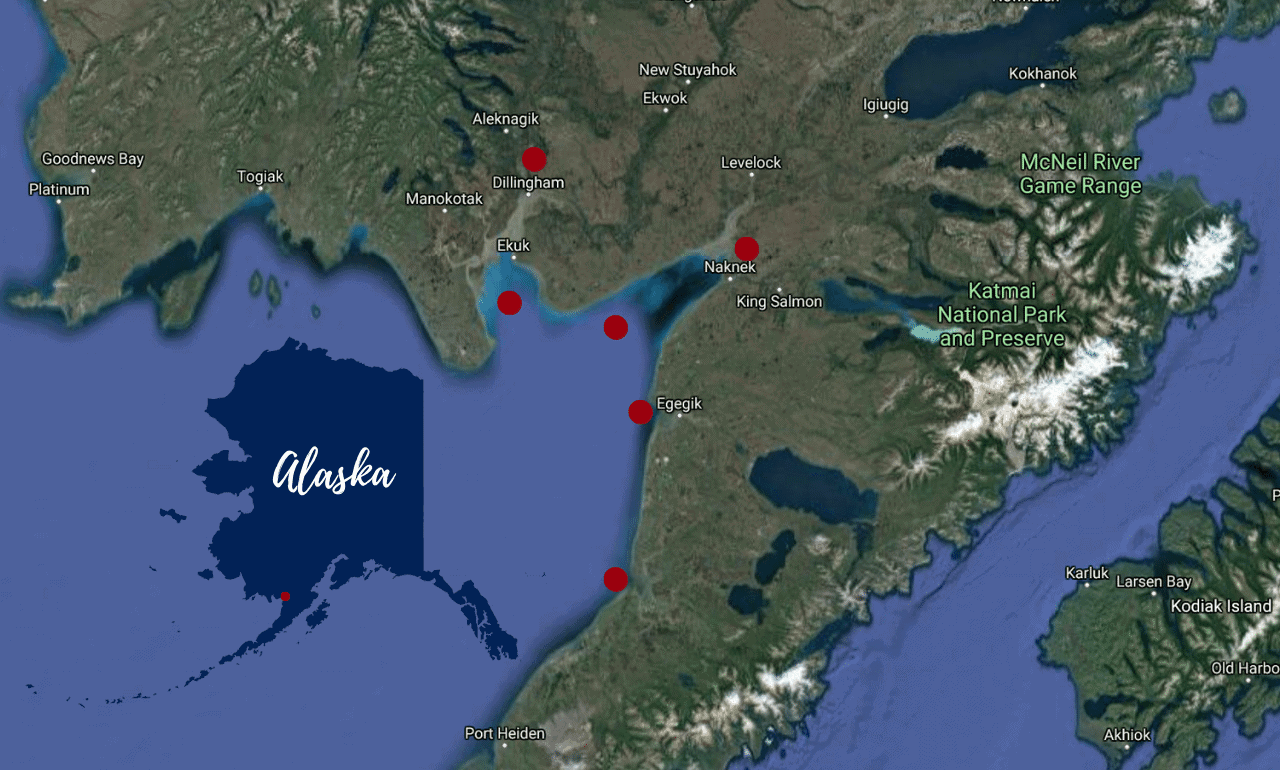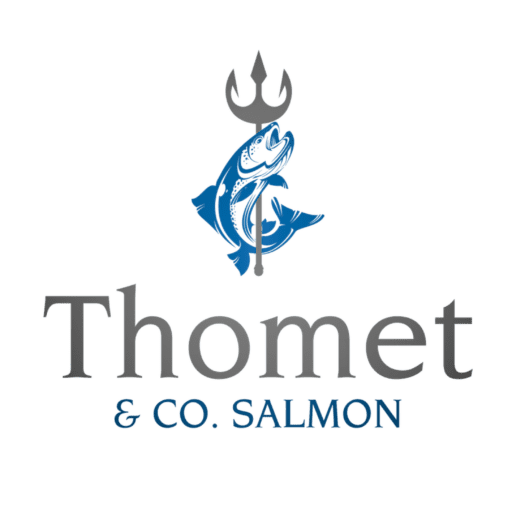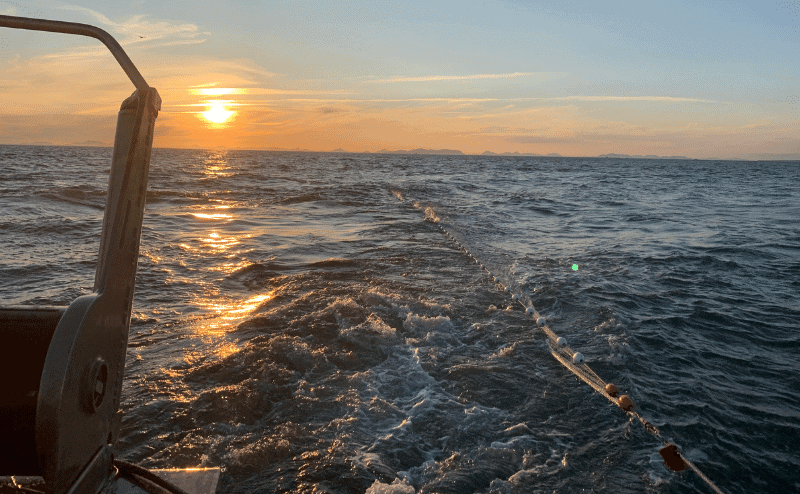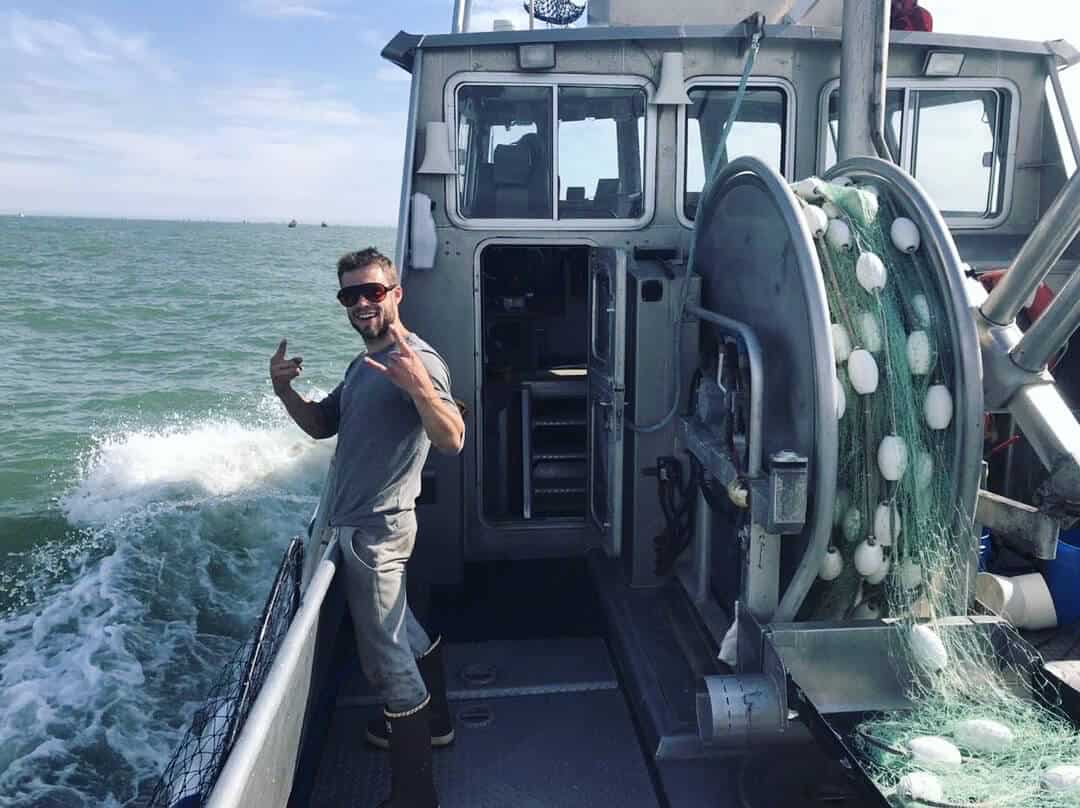Our Fish
Since 2020
Where we fish
All of our salmon are harvested in Bristol Bay, Alaska which includes the Wood, Naknek, Nushagak, Kvichak, Egegik, and Ugashik river systems. All of these systems and many more small rivers and streams comprise the entirety of Bristol Bay. Each specific river system has its own district boundaries in which fishing can take place. Boats are allowed to transfer between districts depending on their own fishing strategies and data gathered about salmon run numbers and escapement. In the beginning, it’s a bit like stocks! Fishermen choose a starting district based on where they think the most salmon are going to be and then must commit to staying in that area. To transfer out, fishermen must wait for 48hrs without fishing to keep from having areas become too crowded. If you pick wrong or don’t do your research, you could miss out on a lot of potential fish. It’s a short season, time is of the essence! Once the Alaska Department of Fish and Game has determined that enough Sockeye have escaped up their specific river systems, the transfer period is waved and Fishermen are allowed to transfer at will between districts.

%
Wild (not farmed)
100% Fresh Flash Frozen
Our process
Our salmon are harvested exclusively from Bristol Bay, Alaska, the world’s most extensive sockeye salmon run. As quality is the main focus of our business model, we implement strict handling practices to ensure you revive fillets we are proud to provide, and you as a salmon lover can be proud to receive.
On the F/V Balrog, we make sure that as soon as the salmon are brought on board, they are handled with care. After picking the salmon out of the Gillnet, they are placed on a canvas slide, ensuring the fish do not hit the hard aluminum deck and bruise. The sockeye congregate at the bottom of the slide, where a crewman individually cuts each salmon’s gill plate, allowing them to bleed so no clotting occurs in the meat. They are then individually counted and placed into eight separate holding tanks, all of which circulate chilled seawater at between 34 and 36 degrees. The salmon are spread out evenly between the holds to keep them all uniformly chilled and submerged.
Once the Balrog is at capacity, we drive to a nearby cannery run-boat (also referred to as a Tender). The Tender lifts our salmon out of the holds, weighs them, checks their internal temp, and looks for nicks, bruises, and damage.
If all quality control points are met, we get the thumbs up, and the sockeye are placed in another chilled holding tank and taken to our cannery, where they are once again high-graded, filleted, deboned, flash-frozen, and vacuum-sealed the day of delivery.
Until the fishing season is over, our processor Silver Bay Seafoods holds the salmon fillets in a storage freezer in Naknek, Alaska from where they are then shipped to their freezer facility in Seattle, Washington. In Seattle, I personally receive them, separate each order, and pack everything in Oregon ready to be pickded up or delivered!
The real Alpha of Omega-3’s!
Brain & Body Fuel
Nutrition Info for Wild Sockeye Salmon
Wild Alaskan Sockeye Salmon Nutrition facts: Cooked, 3 oz./ 85 g
Calories: 130, Protein (g): 23, Fat (g): 5, Saturated Fat (g): 1, Sodium (mg): 80, Cholesterol (mg): 50, Omega-3s DHA+EPA (mg): 730, Vitamin B12 (mcg): 3.8, Vitamin A (mcg): 50, Vitamin D (mcg): 14.2, Selenium (mcg): 30, Potassium (mcg): 370, Iron (mg): .4, Calcium (mg): 10
| Source: USDA Standard Reference Release 28 | Rounded per FDA guidelines


